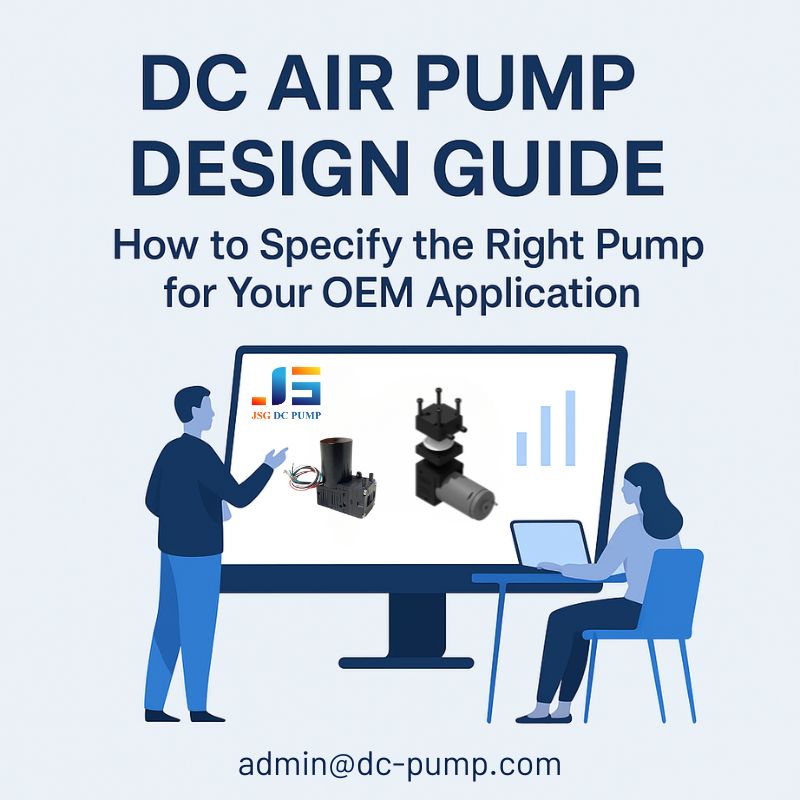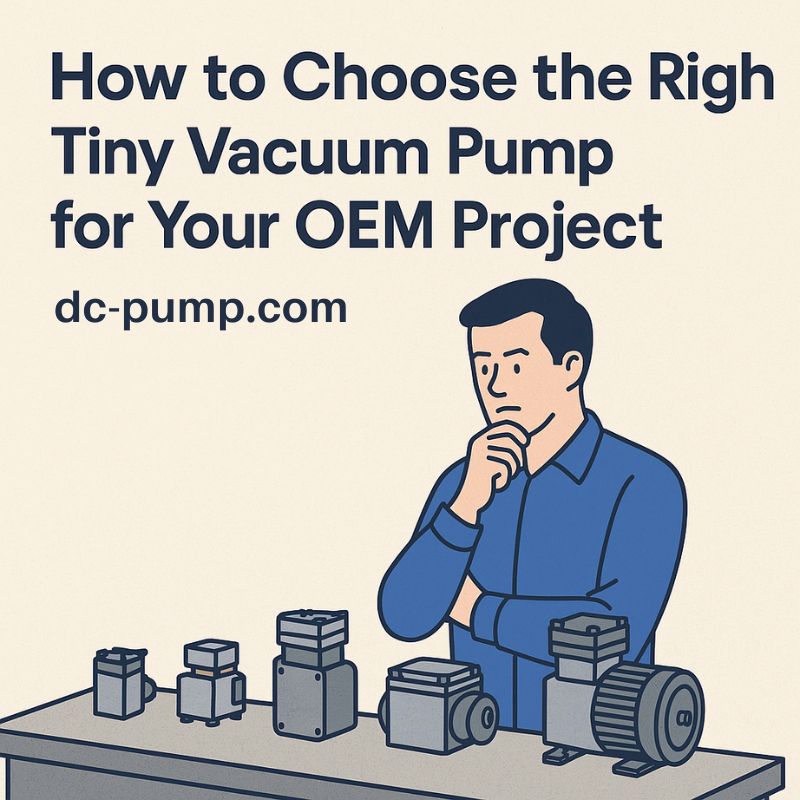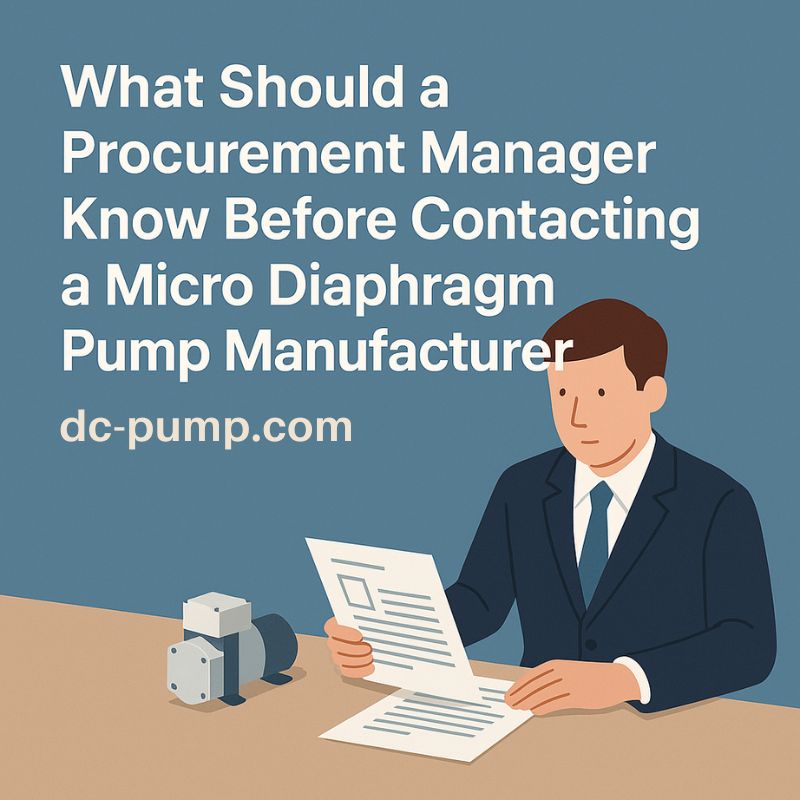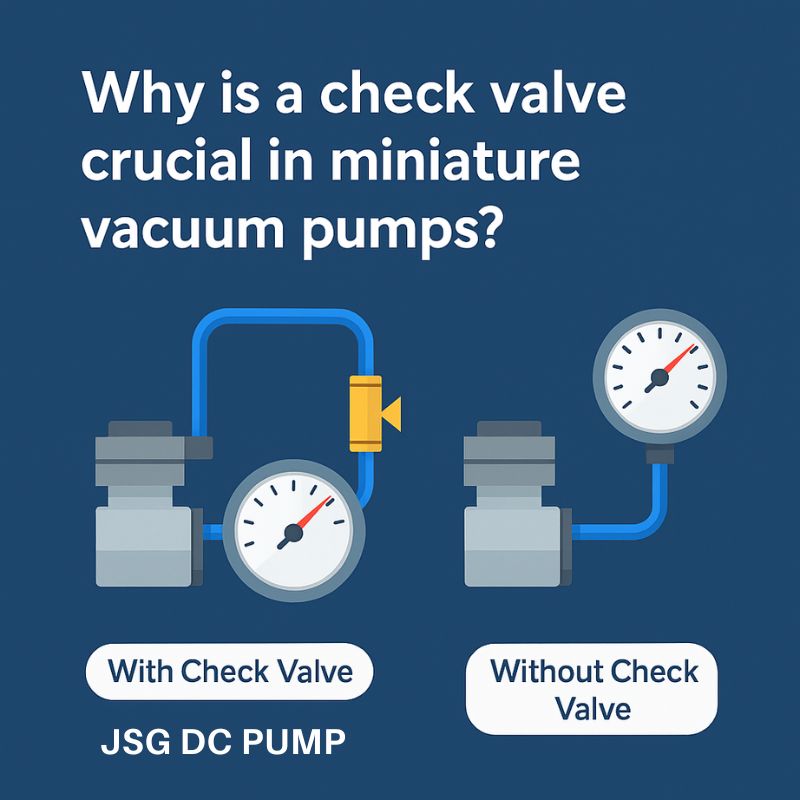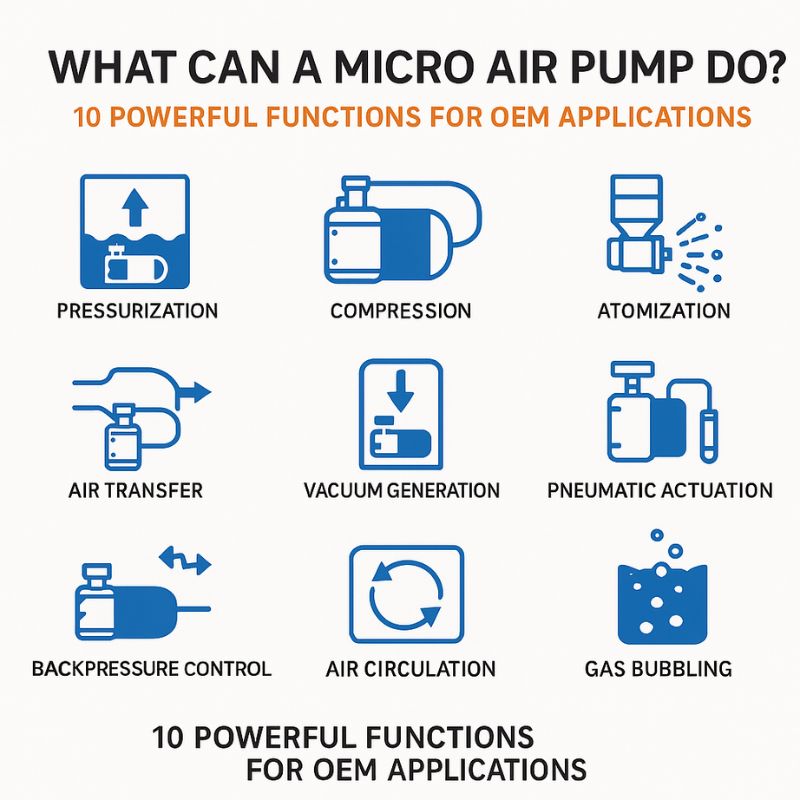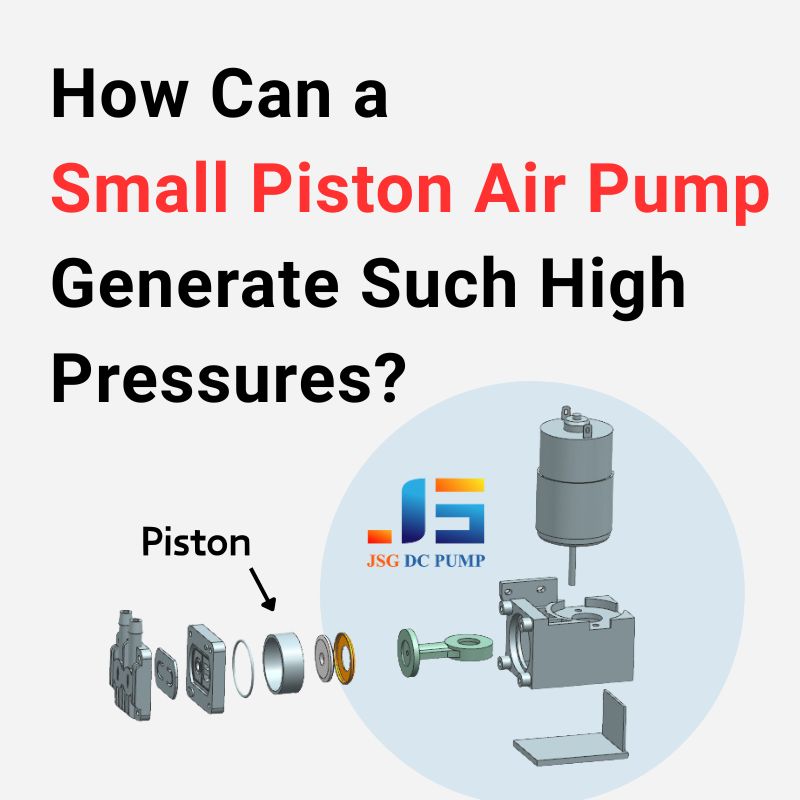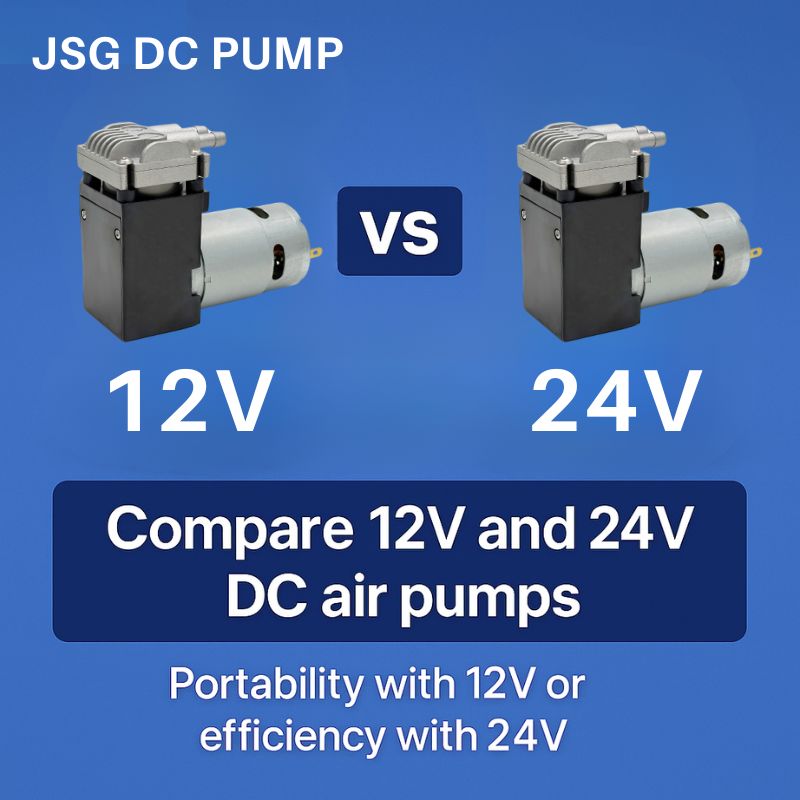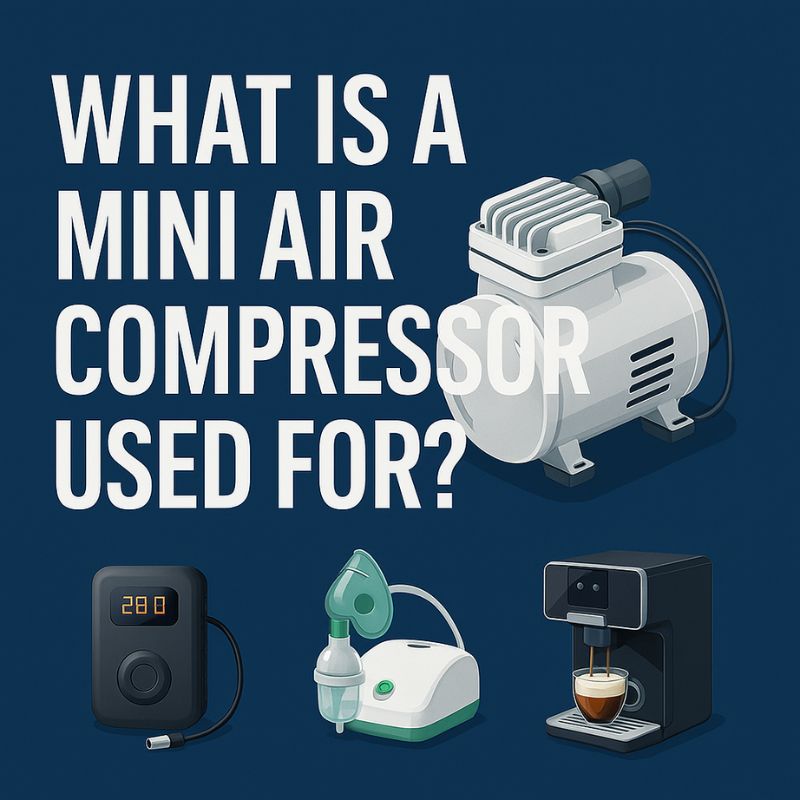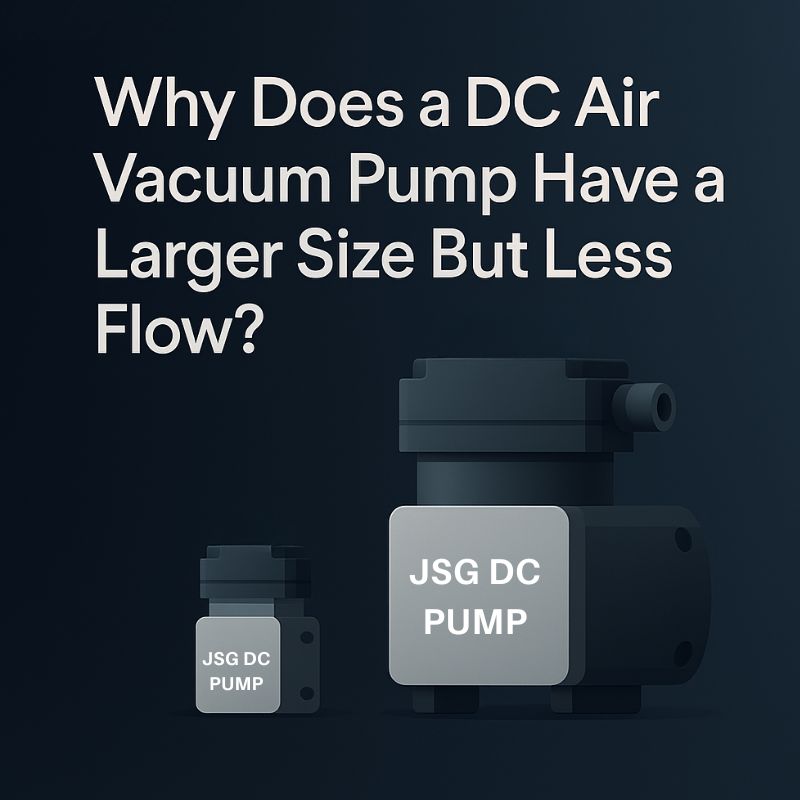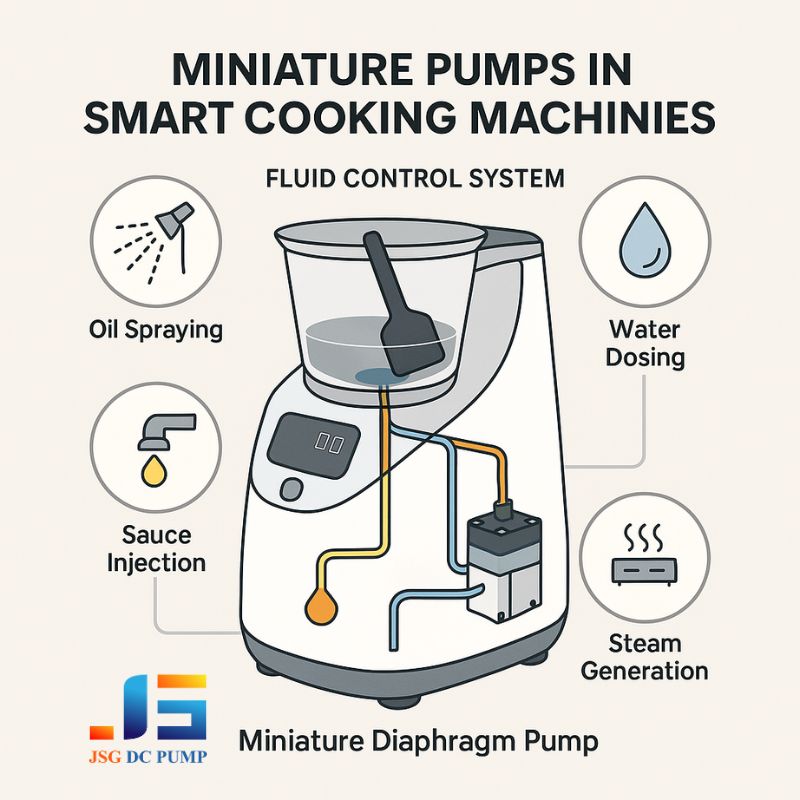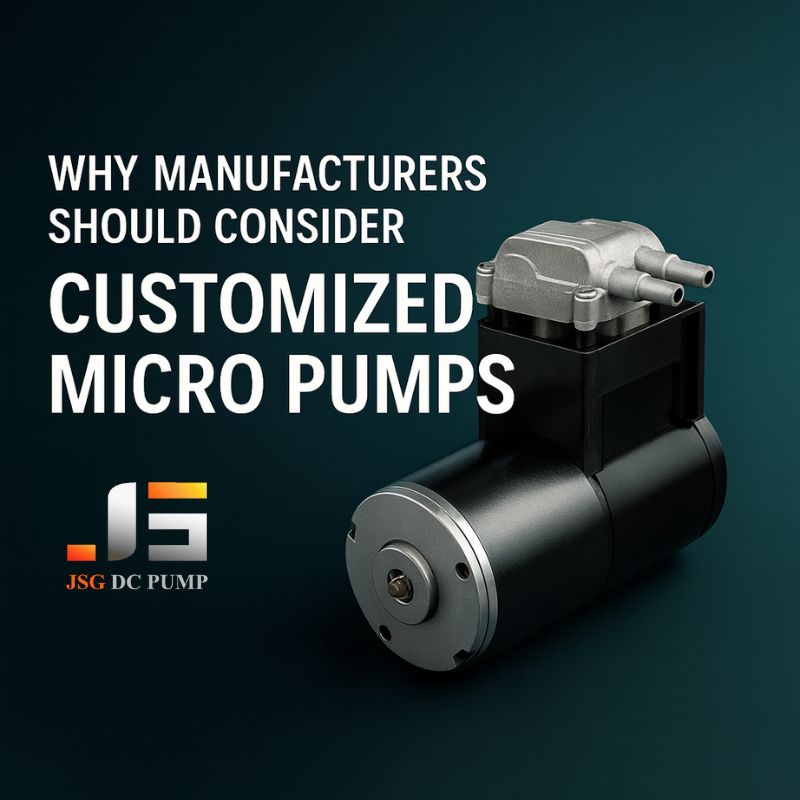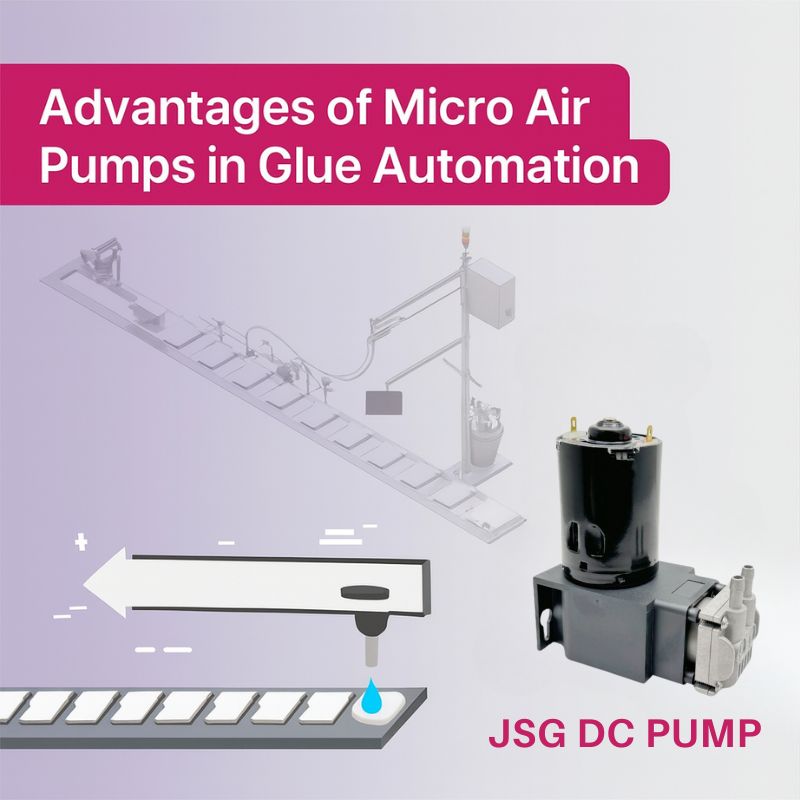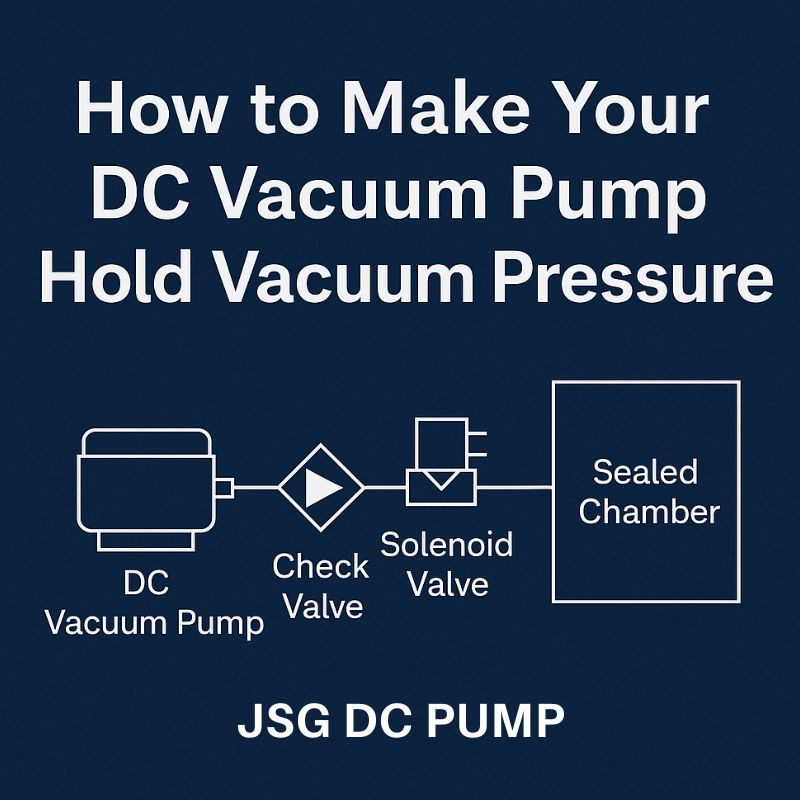Navigating the complexity of selecting the right DC air pump for OEM applications can be daunting. Making the wrong choice often results in significant performance issues, leading to costly downtime and operational inefficiencies. It’s crucial to recognize that a well-informed decision in pump selection not only optimizes workflow but also enhances overall product reliability across diverse industries.
To specify the right DC air pump, assess essential factors like pressure, flow rate, material compatibility, and integration requirements. Tailor these considerations to meet the specific demands of your application to ensure optimal performance and longevity.
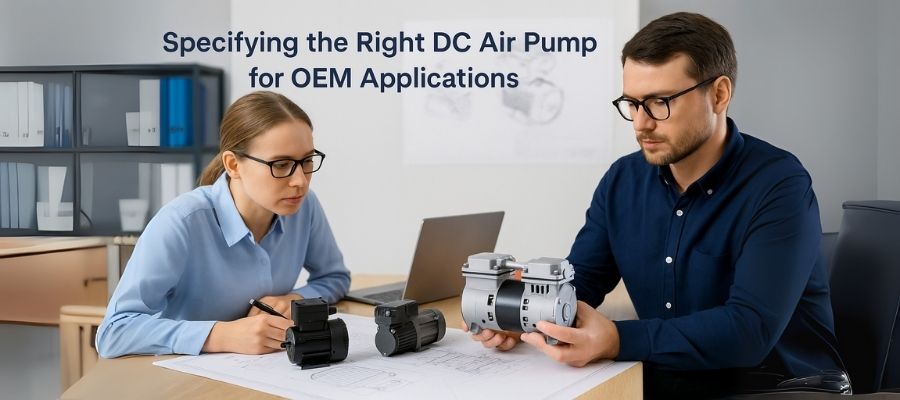
With my over two decades’ experience in the field, I understand that selecting the perfect pump isn’t just a matter of matching specifications but involves a profound understanding of application dynamics and future scalability. Let’s explore these aspects to streamline the selection and integration process.
Why Is Choosing the Right DC Air Pump So Important?
Choosing the correct pump directly affects the operational efficiency and lifespan of your system, while an incorrect selection could disrupt operations, leading to increased downtime and unnecessary costs.
The right DC air pump ensures consistent operational efficiency and reliability. It’s vital for maintaining high-performance standards and meeting the specific needs of your application, whether in medical technology or industrial settings.
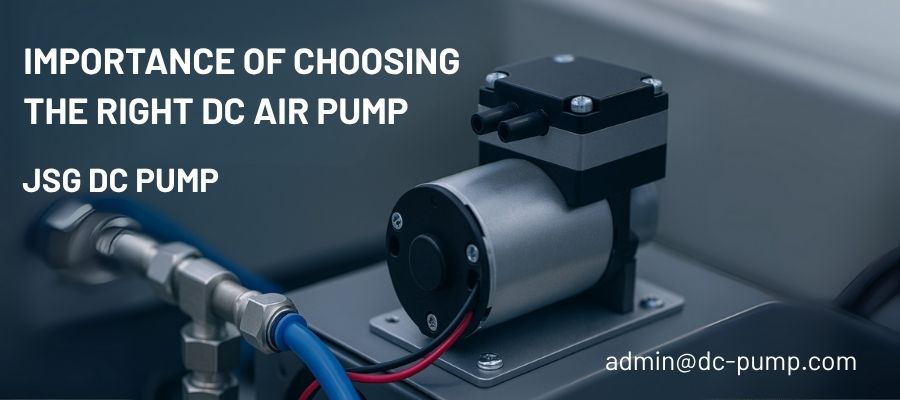
The importance of selecting the appropriate pump is underpinned by the need to avoid common pitfalls such as efficiency loss and heightened maintenance demands. A pump matched precisely to your application enhances overall performance, maximizes longevity, and supports smooth operations across various sectors such as healthcare, automotive, and consumer electronics. Ensuring this alignment requires a deep understanding of both the operational environment and the intrinsic capabilities of the pump technology in use.
Common Industry Applications:
| Industry | Requirement | Outcome |
|---|---|---|
| Healthcare | Low noise, precise flow control | Efficient and quiet operation in devices |
| Automotive | High durability, temperature resistance | Long-lasting, reliable performance in vehicles |
| Consumer Electronics | Compact size, energy efficiency | Seamlessly integrated, energy-saving components |
What Are the Key Parameters to Consider When Selecting a DC Air Pump?
Selecting the right DC air pump involves a thorough analysis of key parameters. Overlooking these can lead to suboptimal performance or even premature pump failure, significantly impacting operational outcomes.
Evaluating parameters such as flow rate, pressure tolerance, material compatibility, noise level, electrical specs, and environmental conditions is crucial. Each of these factors contributes to determining the pump’s suitability and efficiency within your specific setup.
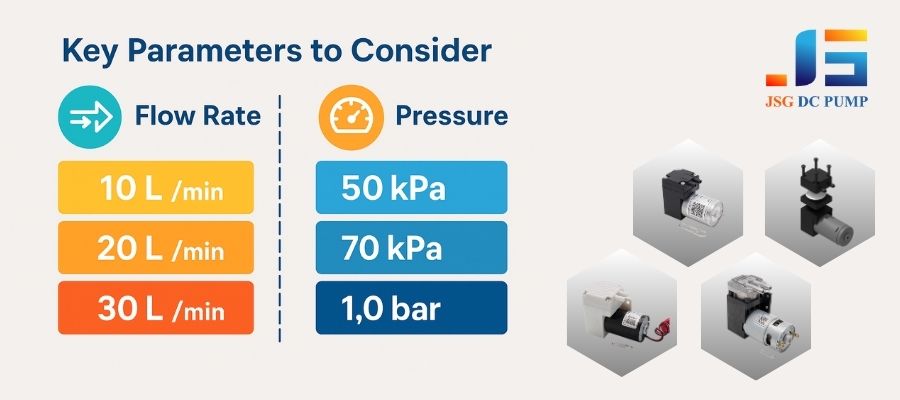
To ensure the pump performs optimally, consider the following aspects:
- Flow Rate: Accurately assessing the required volume of air per minute is imperative. For instance, ventilators necessitate precise flow management to keep the systems operating efficiently and safely. Misjudging flow requirements can lead to inefficiency or overly taxed pump operations.
- Pressure Tolerance: Knowing the operating pressure thresholds is critical for consistent functionality. High-pressure applications must have pumps capable of sustaining desired pressure levels without overloading, thereby ensuring longevity of the pump mechanism.
- Material Compatibility: Selecting materials resistant to environmental factors, such as corrosion or extreme temperatures, ensures that the pump construction complements specific application demands. For chemical industries, this may mean choosing materials with high chemical resistance.
- Noise Level: Addressing acoustic output is especially important in sensitive environments like medical setups. Ensuring compliance with auditory standards enhances both product acceptance and user comfort, making noise reduction a key parameter.
- Electrical Specifications: Confirming voltage and amperage alignment with existing systems is essential for seamless integration and efficiency. Adequate electrical compatibility ensures consistent and uninterrupted operations.
- Environmental Conditions: Understanding the conditions wherein the pump will operate, including humidity, temperature extremes, and potential exposure to harsh chemicals, assists in selecting pumps with appropriate ratings to prevent degradation and shutdowns.
Parameter Comparison Table:
| Parameter | Importance | Application Example |
|---|---|---|
| Flow Rate | Determines air volume capacity | Ventilators require precise control |
| Pressure Tolerance | Sustains consistent functionality | Industrial presses need stable pressure |
| Material Compatibility | Resists environmental stressors | Marine pumps combat corrosion |
What Materials and Technologies Should You Consider?
Selecting unsuitable materials or outdated technologies can severely undermine the functionality and lifespan of a pump. As technology evolves, integrating the latest advancements can significantly enhance pump performance.
Utilizing specialized materials, like corrosion-resistant alloys, ensures enhanced durability. Incorporating advanced technologies, such as brushless motors, improves efficiency while minimizing wear.
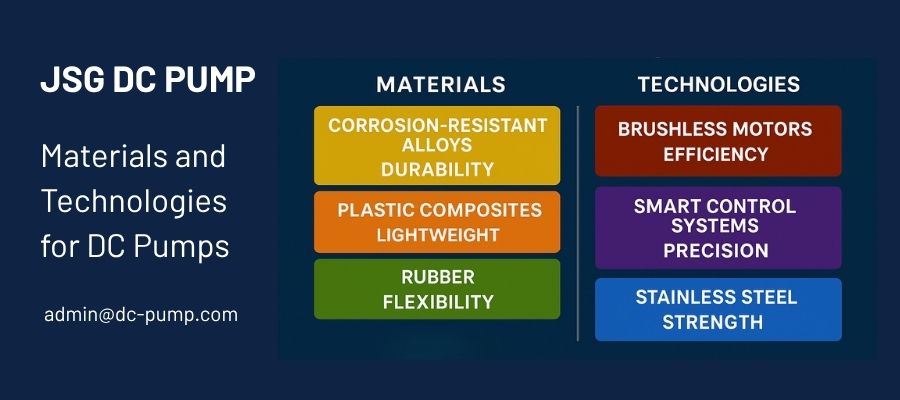
Materials substantially influence durability and performance:
- Corrosion-Resistant Alloys: These provide increased durability, making them ideal for harsh or marine environments. Their ability to withstand adverse conditions ensures long-term reliability.
- Plastic Composites: Often favored for their lightweight and cost-effective properties, they are suitable for consumer electronics focusing on affordability without compromising on quality.
- Stainless Steel: Known for its high strength and resistance to corrosion, stainless steel is perfect for medical devices where non-reactive and robust materials are essential.
Technological integration impacts efficiency:
- Brushless Motors: These motors lower friction within pump operations, reducing heat generation and extending lifespan. This leads to decreased maintenance requirements and enhanced reliability.
- Smart Control Systems: These enable precise adjustments within pump operations, providing enhanced flexibility in diverse application environments.
Material and Technology Application Matrix:
| Material/Technology | Advantages | Common Applications |
|---|---|---|
| Corrosion-Resistant Alloys | Durability, longevity | Marine, industrial pumps |
| Brushless Motors | Efficiency, minimal wear | Medical devices, precision applications |
| Smart Control Systems | Precision, flexibility | Dynamic environments, advanced systems |
Common Mistakes to Avoid When Choosing a DC Air Pump
Selection missteps can result in increased inefficiencies, higher operational costs, and compromised system performance. A careful evaluation can mitigate these issues.
Avoid errors such as neglecting total cost of ownership, underestimating system requirements, and overlooking maintenance implications. Each of these can lead to significant operational challenges and increased costs.
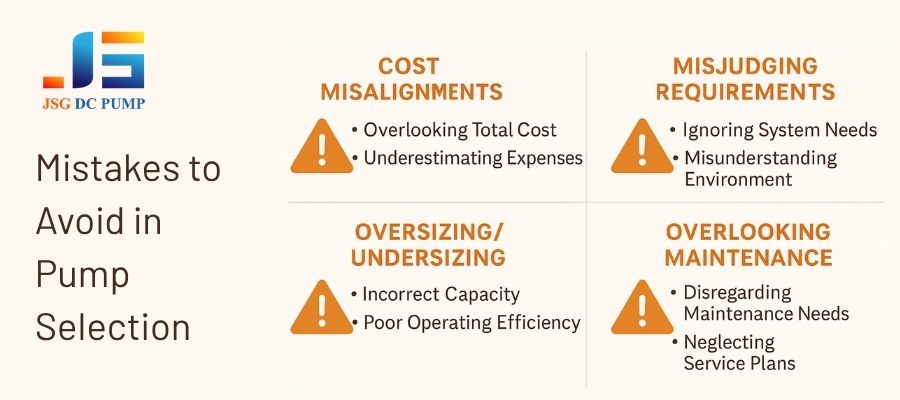
Be mindful of common errors:
- Cost Misalignments: Consider not just upfront costs but the total ownership expenditures, including energy consumption and maintenance efforts. Neglecting ongoing costs can lead to budget overruns and resource strain.
- Misjudging Requirements: Accurately understanding system requirements and environmental conditions is vital. This prevents under-sizing or over-sizing pumps and ensures that they can handle the expected operational load.
- Maintenance Oversights: Ease of maintenance and availability of spare parts are crucial for ensuring long-term reliability. Planning for regular maintenance minimizes downtime and enhances operational continuity.
- Integration Failures: Mechanical and electrical compatibility checks are critical to prevent operational hiccups during integration. Ensuring that the pump fits within the existing system infrastructure is key to seamless operations.
Common Mistakes and Avoidance Strategies:
| Mistake | Consequences | Avoidance Strategy |
|---|---|---|
| Neglecting Total Cost | Budget overruns, inefficiencies | Conduct thorough cost-analysis |
| Misjudging Requirements | Pump failure, inefficiency | Comprehensive requirement assessment |
| Overlooking Maintenance | Increased downtime, reliability issues | Implement regular maintenance schedules |
| Integration Failures | Operational disruptions | Conduct compatibility assessments |
Frequently Asked Questions on DC Air Pump Selection
Misunderstanding basic principles of pump selection can significantly impede effective integration and operational success. Addressing these uncertainties through frequently asked questions clarifies the selection process.
Our FAQs focus on sizing, compatibility, energy efficiency, and customization options, providing a streamlined selection path and enhancing understanding of all necessary components involved.

Frequently asked questions encompass:
- How is pump size determined? Size calculation involves matching flow rate and pressure specifications to application needs, ensuring optimal performance without overburdening the system.
- What about compatibility? Comprehensive evaluations of mechanical and electrical fit within existing systems ensure harmonious integration, preventing deployment challenges and system disruptions.
- Energy efficiency queries? Brushless motor designs are renowned for minimizing energy use, contributing significantly to reduced operational costs and enhanced sustainability.
- Customization concerns? Tailor pump designs to meet unique application demands through scalable solutions, addressing specific operational environments and technological requirements.
FAQs Table:
| Question | Answer | Importance |
|---|---|---|
| How is pump size determined? | Based on flow rate and pressure specs | Ensures optimal performance |
| What about compatibility? | Evaluate mechanical and electrical fit | Prevents integration challenges |
| Energy efficiency queries? | Brushless motors minimize energy use | Enhances sustainability |
| Customization concerns? | Tailored designs for unique demands | Meets specific operational needs |
How Do You Guarantee Effective Pump Integration with OEM Designs?
Oversights during integration can significantly impact design harmony and systemic efficiency. Careful strategy implementation prevents these disruptions, ensuring seamless pump integration.
Strategic compatibility assessments and collaborative testing guarantee alignment between the pump and OEM systems, promoting smooth integration and operation.
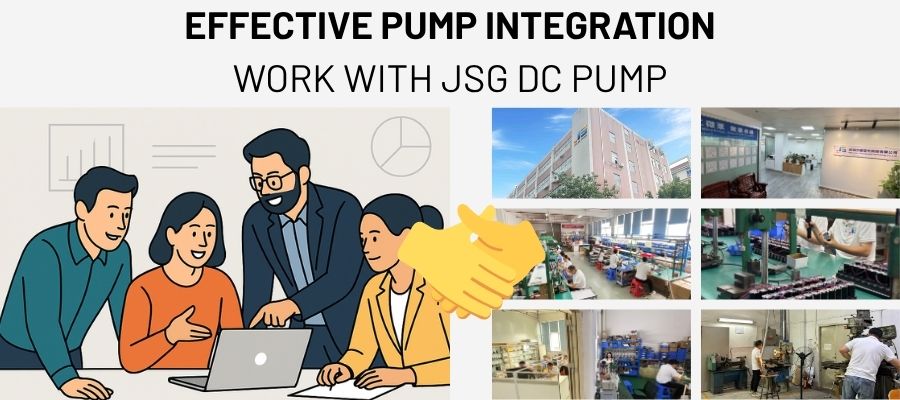
Successful integration involves multidisciplinary collaboration and rigorous testing protocols:
- Cross-Functional Collaboration: Align mechanical, electrical, and software teams to ensure seamless component integration. The synergy between these teams enhances the overall design harmony and operational consistency.
- Proactive Testing Protocols: Rigorous testing of system responses before full-scale deployment ensures compatibility across various parameters, identifying areas for improvement and avoiding unforeseen operational disruption.
- Holistic System Review: The comprehensive assessment of system dynamics, including fluid flow, electrical interfaces, and physical space, ensures complete design integrity and enhances overall functionality.
Integration Strategy Table:
| Strategy Element | Action | Expected Outcome |
|---|---|---|
| Cross-Functional Collaboration | Team synergy | Seamless integration |
| Proactive Testing Protocols | System validation | Identify compatibility issues |
| Holistic System Review | Comprehensive analysis | Enhanced design integrity |
What Sets JSG DC PUMP Apart in OEM Applications?
Choosing the right partner empowers innovation and ensures quality. JSG’s approach to OEM applications is marked by engineering excellence, customizability, and proven reliability, making it an ideal choice for dynamic OEM solutions.
JSG’s pumps offer exemplary engineering support, adaptable designs, and a global track record of reliability, empowering success across diverse OEM environments.
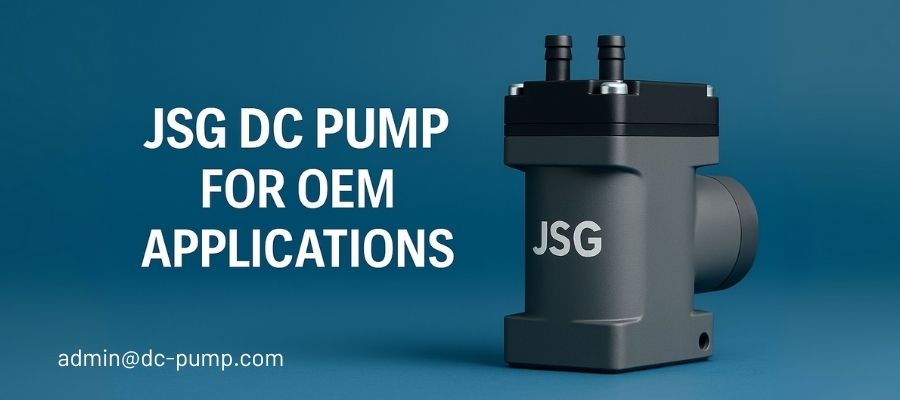
Key benefits of choosing JSG include:
- Expert Engineering Support: From concept through implementation, expert guidance ensures designs achieve and exceed performance goals, safeguarding operational success and integrity.
- Customizable Solutions: Adapt pump designs easily to meet specific application demands, ensuring consistent performance even in high-stakes environments. Flexibility in design adaptation strengthens product viability across varied contexts.
- Global Reliability Track: JSG’s longstanding reputation for durability and innovative support assures reliability, empowering OEM progress through reinforced trust and excellence.
JSG Advantages Summary:
| Advantage | Description | Impact |
|---|---|---|
| Expert Engineering Support | Continuous guidance ensures success | Maximizes design efficacy |
| Customizable Solutions | Adaptable designs for diverse needs | Strengthens product viability |
| Global Reliability Track | Proven reputation enhances trust | Empowers OEM progress |
Conclusion
Specifying the right DC air pump involves a comprehensive understanding of flow rate, pressure tolerance, material compatibility, technology advancements, and integration strategies. By focusing on these critical elements, you ensure optimal application performance and reliability suited to OEM demands. Through careful selection and collaboration, long-term success becomes achievable, reinforcing both functional integrity and market competitiveness.
At JSG DC PUMP, we specialize in helping OEMs design and integrate the most reliable, efficient, and customized DC air pump solutions for their specific applications. Our team is ready to support you with expert guidance and tailored options to meet your exact requirements.
📩 Contact us today at admin@dc-pump.com to discuss your project needs and discover how JSG DC PUMP can add value to your OEM systems.


